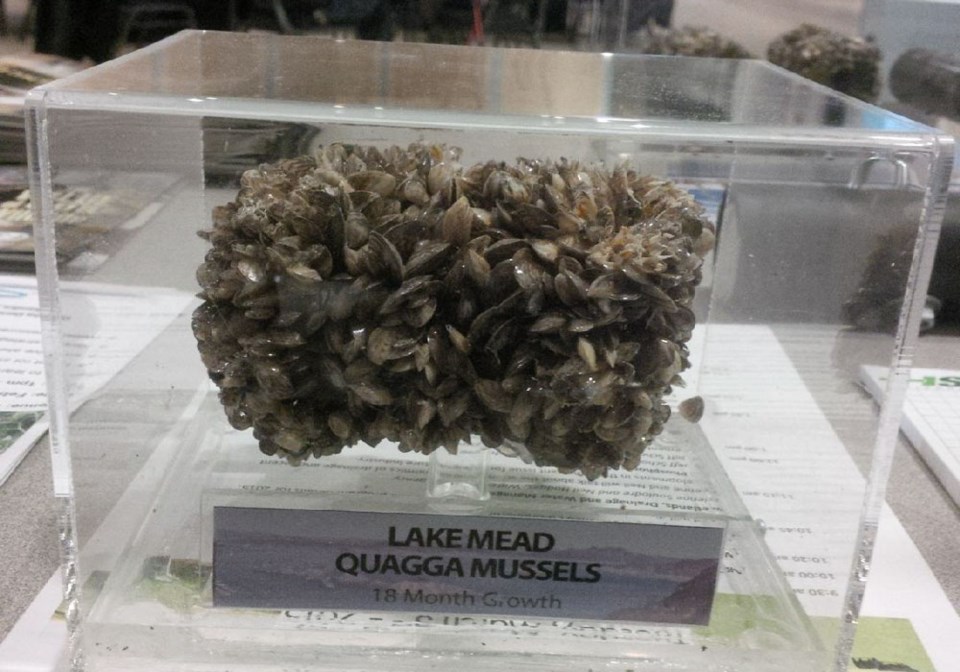With the spring thaw on the horizon, those sensitive to the delicate ecosystems in our streams and rivers will be on the watch for invasive species that may enter the waterways.
In particular, the concern in southeast Saskatchewan is zebra mussels, which attach themselves to hard surfaces and often use pipes as habitats because of the constant flow of water and food. The colonies can grow to more than 10 cm thick and can end up blocking the pipes where they reside.
And they are slowly making their way closer to Estevan, having been found in Manitoba and North Dakota.
Recently Environment Canada released a risk assessment on reservoirs, and all of the reservoirs in the Upper Souris Watershed area were ranked as high risk. Because of that, Dave Pattyson, Upper Souris Watershed Association co-ordinator, said the watershed wants to keep interest and activity in what he called a big potential problem.
“In the risk assessment, Environment Canada looked at the conditions of the water and also the boat activity in the reservoirs, and where those boats are coming from, because in all likelihood a recreational boat will be the means of (introducing mussels) into a reservoir.”
That boat activity, along with the local reservoirs’ proximity to known infestations, make the local reservoirs particularly vulnerable.
“They’re a species that is fairly elastic in the conditions they can thrive in,” said Pattyson. “They’re literally knocking on our door.”
They look for water with a little salt content and will grow in water temperatures from 10 to 17 C.
With the warmer waters of Boundary Dam Reservoir, as a result of the hot water return from Boundary Dam Power Station, Pattyson said an infestation of that reservoir would be a worst-case scenario.
“The reason being is because of the water temperature, the conditions would be quite favourable to rapid growth of the zebra mussels, and in addition to that, zebra mussels like to colonize areas where there is a draw,” he said. “Structure that draw water from a reservoir can be damaged through the growth of zebra mussels.”
On Boundary, the province has invested a lot into infrastructure with the power station, but the City of Estevan also draws water from Boundary as well.
“There are appropriate conditions in Boundary for mussel growth, and because of the infrastructure into Boundary, there would be high economic impact to an infestation.”
SaskInvasives.ca said blocked pipes can cause serious damage for any system that requires water flow, such as drinking water systems and electrical generating facilities. Retrofitting the systems to control zebra mussel growth could cost taxpayers and industry millions of dollars.
The only real prevention of that scenario is for those who transferring boats or other equipment from one body of water to local reservoirs, the boats should be thoroughly cleaned away from the water body.
The USWA is once again co-ordinating its aquatic invasive species program, and in the second year of the program there will be a greater emphasis on monitoring.
“This season, what we will be doing is improving some of the signage that’s installed at the boat launches, and we’re quite hopeful we’ll be able to expand this to a monitoring program as well.”
A monitoring program would mean the installation of a number of substrate monitoring units in place on all of the area reservoirs in the watershed. Monitors would come in the form of “substrate samplers,” said Pattyson, who noted the mechanism is a simple trap the mussels would be able to attach themselves to.
“What we would do is pull those out of the reservoir son a regular basis and check them for infestation.”
The watershed association would also complete shoreline surveys looking for any evidence of an infestation from the mussels. The mussels, which have been found in Lake Manitoba and North Dakota, are the biggest concern of the USWA at the moment. Zebra mussels were introduced to North America in the 1980s, and originated in the Baltic Sea, journeying across the Atlantic Ocean ships’ bilge water.
The substrate samplers the USWA will install will remain fixed and replaced to the same location following each inspection. That consistency is important in the monitoring process.
“It allows us to go back to the exact same site. That information will be put into an online database, because one of the things we want to track is the negative (samples). Not finding it is a positive,” said Pattyson.
What the Ministry of Environment wants is to track where things are being monitored, and they can then confirm what areas continue to be zebra mussel free.



